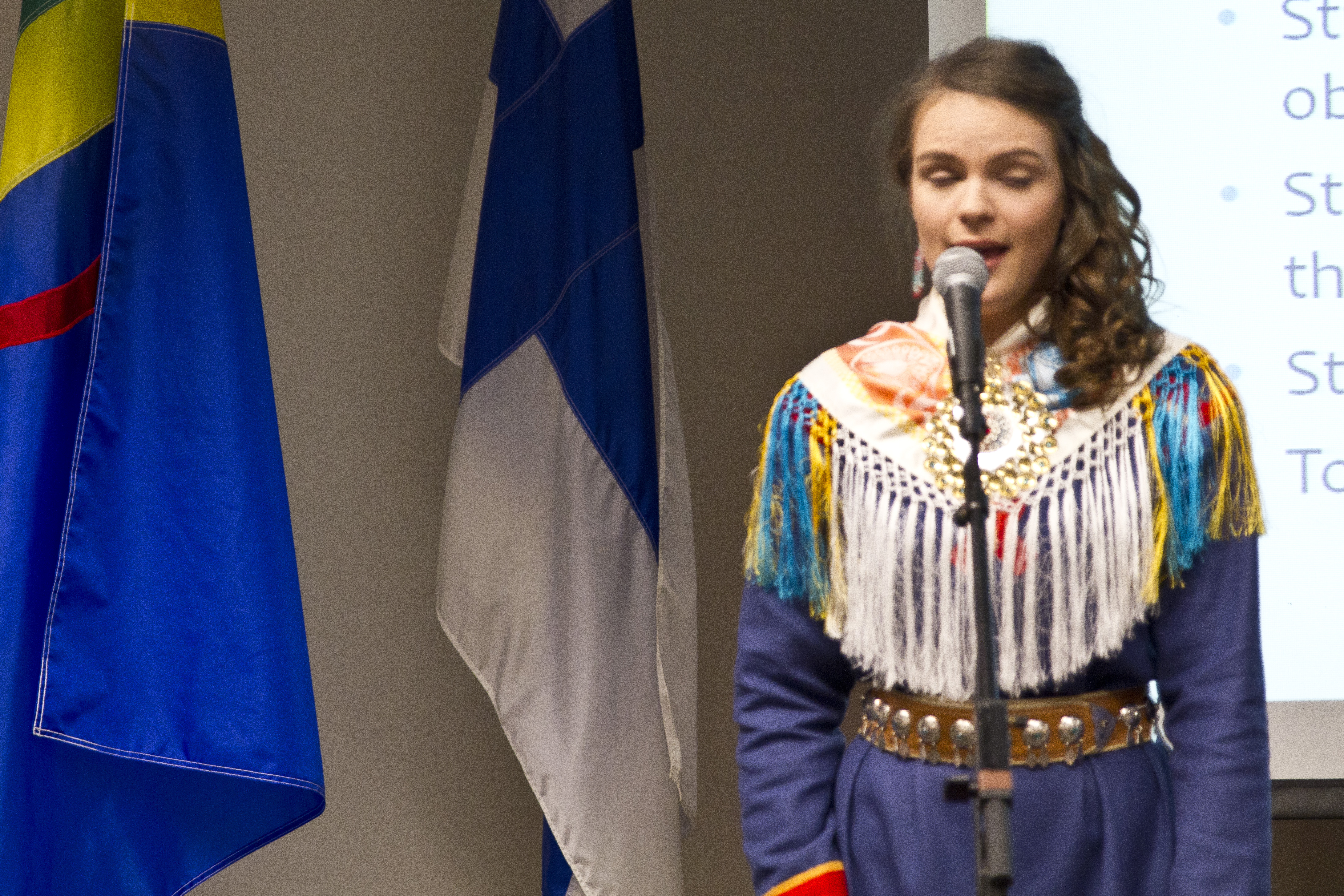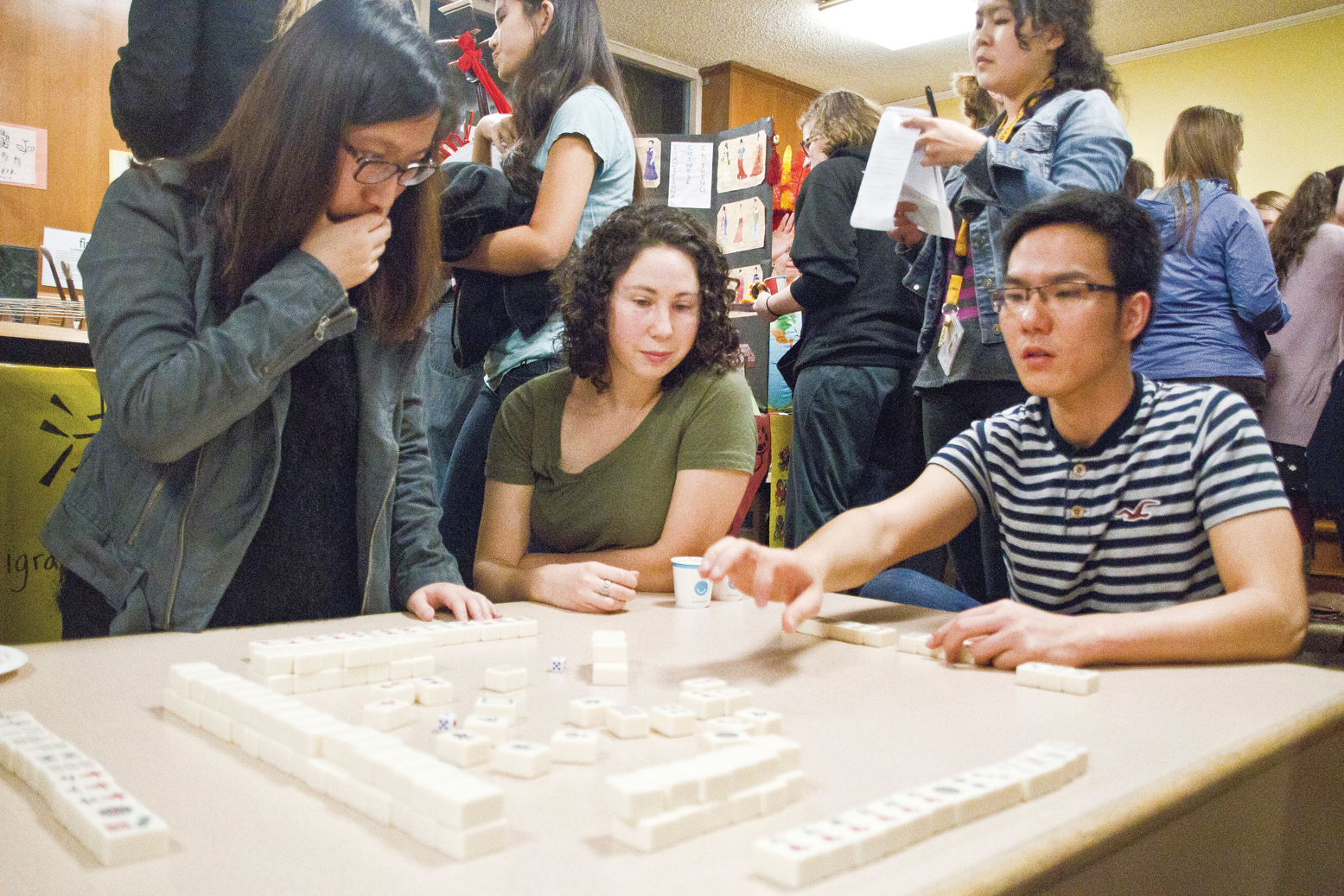By Una Tingvik Haave, Guest Writer
The Pacific Lutheran University community had the chance to learn about the musical art of joik when Risten Anine Gaup, a Sami from Northern Norway, performed traditional Sami songs Feb. 6. The Sami are the indigenous people of northern Scandinavia and Feb. 6 is Sami National Day.
The performance was part of the the opening of the Sami exhibit in the Scandinavian Cultural Center, “Us Local People: Sami Vuoiŋŋa and Resilience.” Attendance was high for the opening, with every seat filled and some standing to watch Gaup perform.
Gaup traveled from northern Norway to perform in PLU’s second annual celebration of Sami National Day.
PLU students and Sami Americans in the area gathered in the Scandinavian Center to hear Gaup sing and talk about the role the traditional Sami form of song, joik, has played in Sami history and culture.
“Joik is a form of musical expression, and it is actually one of the oldest forms of musical expression in the world,” Gaup said.
She explained that many Sami stopped using this form of expression for a long time because Christian authorities prohibited it. They were convinced Sami was the devil’s language, and Sami joik was the devil’s song.
Though this view has changed over the years, there are still Sami people who do not perform joik today.
“Still today, I know people in my hometown who don’t like that I’m standing here joiking for you right now,” Gaup said.
She explained that her father taught her and other Sami children to joik at an early age in Kautokeino, Norway, and that because of his efforts many more Sami natives know how to joik today.
After Gaup’s performance, organizers encourage attendees to walk around and look at the various exhibit items, one of which was large authentic Sami tent. Organizers also offered reindeer meat, which is a traditional Sami dish.
As the evening proceeded, documentary films “Tundra Cowboy” and “People and Power: Under Northern Lights” played for the attendees.
Troy Storfjell, an associate professor of Norwegian and Scandinavian studies and a Sami, also spoke at the event. He spoke about the important role joik has played in Sami culture.
He explained that because the Sami people had managed to take something that had been looked down upon for so long, and turn it into something to be proud of has been an important part of the indigenous rights movement, and is one of the reasons why the Sami people are considered leaders in this movement.
Storfjell also drew a parallel between the Native American tribes’ and the Sami people’s struggle for human rights and dignity.
“We’re working to build a Native American Indigenous studies program here at PLU,” Storfjell said.
Storfjell and three other professors are working closely with the Puyallup and Muckleshoot tribes and the Seattle Indian Health Service at the moment in the hopes of creating a program that is closely associated with the local Native American population and also studies the Sami people.
The Sami exhibit runs until April 1.



















